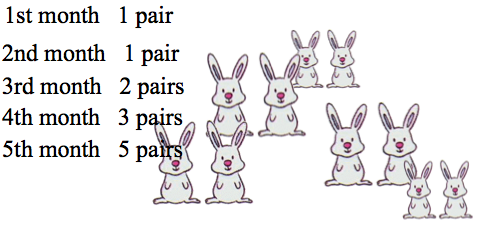| Date |
Activities
/
Objectives |
Images
/
Home
work
/
Assignments |
Remarks
/
Images |
References / Links |
|---|---|---|---|---|
Friday April 1st 11:25 -12:05 |
|
Game
of the Hanoï Towers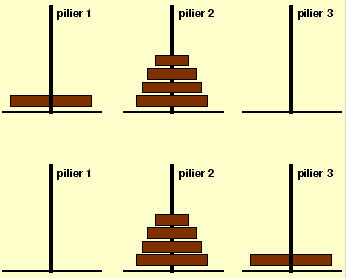 Mn = Mn-1 + 1 + Mn-1 Mn + 1= 2Mn-1 + 2 = 2(Mn-1 + 1) Mn + 1 = 2n * * * How to make 2 candy bars with 1 : (April's 1st Fool's day ...) Take a candy bar, chop it up in two equal parts and each new piece in two ... indefinitely, then glue them back together ... on top of the first half, then ... you get TWO candy bars instead of one ... 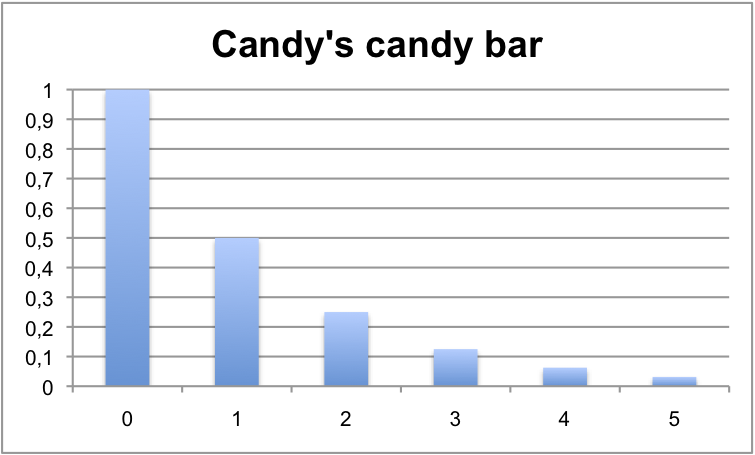  |
The puzzle was invented by the French mathematician Édouard Lucas in 1883. There is a legend about an Indian temple which contains a large room with three time-worn posts in it surrounded by 64 golden disks. Brahmin priests, acting out the command of an ancient prophecy, have been moving these disks, in accordance with the rules of the puzzle, since that time. The puzzle is therefore also known as the Tower of Brahma puzzle. According to the legend, when the last move of the puzzle is completed, the world will end.[1] It is not clear whether Lucas invented this legend or was inspired by it. If the legend were true, and if the priests were able to move
disks
at a rate of one per second, using the smallest number of moves, it
would take them 264−1 seconds or roughly 585 billion years;[2]
it would take 18,446,744,073,709,551,615 turns to finish ... Similarly see |
Game of the Hanoï Towers About the chess board and the Formula of Sn for a Geometric sequence : see 高中数学 #5 - B - 2005 p. 51-52 Problem of the Chess Board When the creator of the game of chess (in some tellings an ancient Indian mathematician, in others a legendary dravida vellalar named Sessa or Sissa) showed his invention to the ruler of the country, the ruler was so pleased that he gave the inventor the right to name his prize for the invention. The man, who was very wise, asked the king this: that for the first square of the chess board, he would receive one grain of wheat (in some tellings, rice), two for the second one, four on the third one, and so forth, doubling the amount each time. The ruler, arithmetically unaware, quickly accepted the inventor's offer, even getting offended by his perceived notion that the inventor was asking for such a low price, and ordered the treasurer to count and hand over the wheat to the inventor. However, when the treasurer took more than a week to calculate the amount of wheat, the ruler asked him for a reason for his tardiness. The treasurer then gave him the result of the calculation, and explained that it would be impossible to give the inventor the reward. The ruler then, to get back at the inventor who tried to outsmart him, told the inventor that in order for him to receive his reward, he was to count every single grain that was given to him, in order to make sure that the ruler was not stealing from him. |
Wednesday April 6 11:25 -12:05 |
|
Preparation of TEST of Friday April 8th Review all previous exercises 1.1-1.2-2.1-2.2-2.3-2.4 about recursive or non recursive sequences + formulas of the Geometric series Dowload the .ppt prepared by 吴鹏老师 for his visit to my class at Ecole alsacienne in January 2009 |
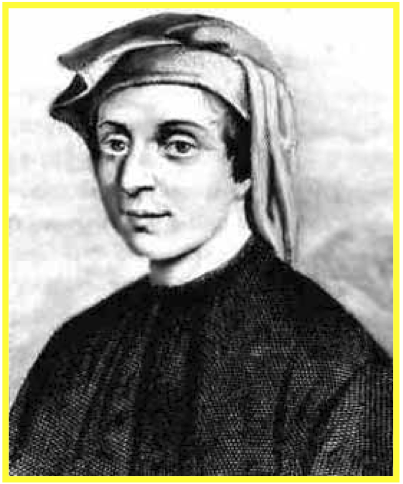 Fibonacci (XIIIth c.) |
Review
: Arith. & Geom. Sequences Memo Ex. 1.1 & 1.2 ANSWERS Ex. 2.1 & 2.2 ANSWERS Ex. # 2.3 ANSWERS Ex. # 2.4 The Chaos Theory 吴 鹏老师.ppt Exercises on Fibonacci's # 2.5 |
| Friday April 8 11:25 -12:05 |
TEST about recursive sequences |
   |
Test A Test B |
|
|
Wednesday April 13 11:25 -12:05 |
|
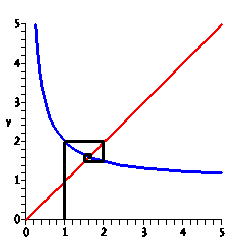 |
TESTS RESULTS (maximum score : 40 pts) 32 ≤ N ≤ 40 := 10% 28 ≤ N ≤ 31 := 20% 24 ≤ N ≤ 27 := 22% 00 ≤ N ≤ 23 := 48% |
|
Friday April 15 11:25 -12:05 |
Geometric Series in ... Geometry (I) Study of the finite Length of an Infinite Spiral |
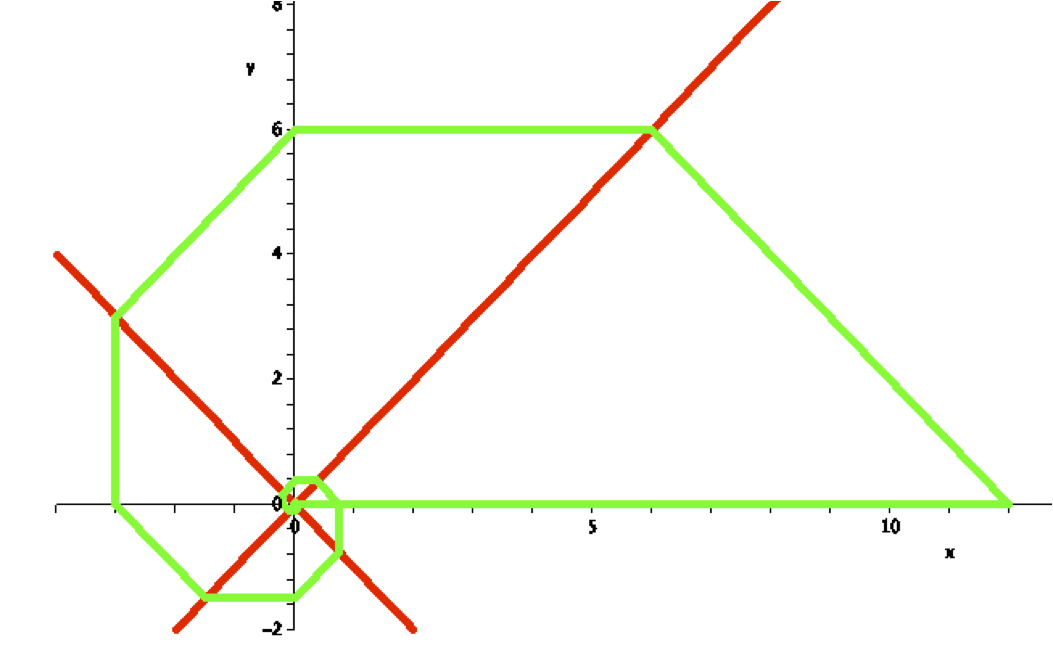 |
Geometric Series in ... Geometry (I) |
|
Wednesday
April 20 11:25 -12:05 |
Geometric Series in ... Geometry (II)  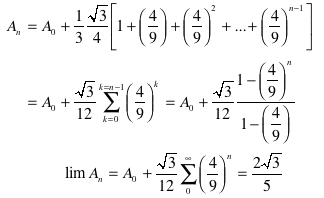 |
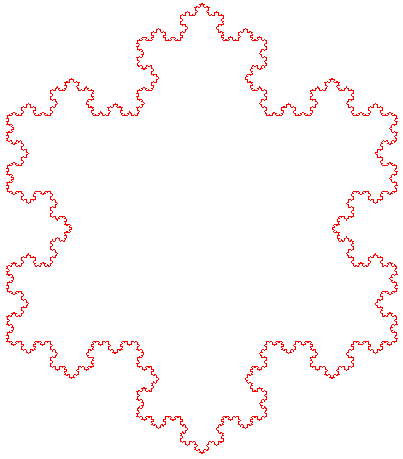 |
Comparison of the inifinite length of the perimeter with the finite measure of the area |
Geometric Series in ... Geometry (II) Koch Snowflake Answers |
|
Friday April 22 11:25 -12:05 |
Geometric Series in ... Geometry (III)  |
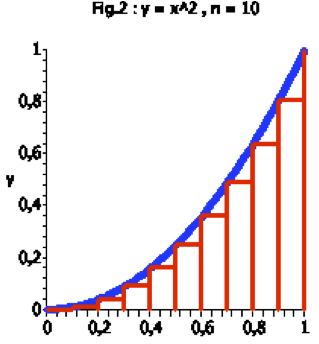 |
Geometric Series in ... Geometry (III) Riemann's Integral Sum ANSWERS |
|
Wednesday
11:25 -12:05 |
(general - Non elective subjects) |
|||
| Friday April 29 11:25 -12:05 |
||||


